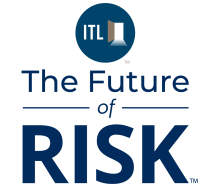In an industry built on long-term relationships and brand trust, insurers are facing a generational shift that's impossible to ignore. Gen Z is stepping into adulthood with a new set of expectations, behaviors, and decision-making patterns that many insurers simply aren't prepared for.
This is a digitally native generation that grew up on mobile-first experiences, real-time feedback, and hyper-personalized content. It's no wonder that more than half of this cohort feels anxious or overwhelmed at the thought of dealing with insurance. It seems well out of their wheelhouse.
That's a problem—but it's also an opportunity.
Why early engagement matters with Gen Z
Most 20-somethings aren't thinking about insurance in a holistic way. But they are driving, renting, starting jobs, and forming financial habits. These life moments come with insurance needs—auto, renters, life, and beyond—and represent key opportunities for engagement.
Reaching younger consumers early with products that feel relevant and easy to understand helps establish trust and sets the stage for long-term relationships. Younger customers who buy into policies earlier tend to be more profitable and loyal.
Yet many carriers are still relying on outreach strategies that haven't evolved in decades. The first step in pinpointing the right way to connect with this important generation is gathering insights that are timely, accurate, robust, and built to reflect how Gen Z actually engages with brands and content.
Why traditional consumer insights research falls flat
Our research shows that Gen Z's purchase habits are incredibly complex, using social media, for example, to discover products and services, but then turning to other channels for purchase. In fact, only 18% complete the purchase directly through social channels, while 88% buy via online marketplaces (Amazon, Etsy, etc.) and 75% through brand websites. That's just one small example of how hard it can be to find that sweet spot with Gen Z.
Traditional survey methods and clinical, outdated feedback tools don't resonate with this group: they expect, at minimum, real-time interactions, seamless UX, and hyper-personalized content. In many cases, the problem isn't the product, it's the way insurers are trying to understand and engage their audiences.
To reach them effectively, insurers need to reframe how they approach research. That starts by engaging them where they are: on mobile devices, in the moment, and on their own terms. Static, 30-minute surveys won't cut it. Instead, agile approaches that mimic the way young people already communicate, via text, voice, and mobile-first platforms, are far more likely to spark real dialogue.
It's also about more than just the channel. Gen Z craves authenticity. Research must be designed to create a conversation, not an interrogation, and to build trust through transparency. When young consumers feel heard and respected, they're more willing to share meaningful, thoughtful feedback that insurers can actually act on.
Quick wins for insurers doing market research
You can benefit from:
● Text-first surveys: Reach Gen Z where they already are—on their phones.
● Continuing engagement: Regular check-ins build loyalty and provide real-time insight into customer needs.
● In-the-moment claims feedback: Moments of vulnerability can provide opportunities for empathy, rather than just data collection.
● Tailored incentives: Offer rewards that feel immediate, personal, and worth their time.
Making insurance more relevant
When guided by the right insights, insurers can design offerings that feel tailored to Gen Z's lifestyle and mindset. Some companies are already experimenting with new ways to make insurance feel more relevant, such as:
● Life insurance with wellness perks: Bundling policies with benefits like cancer screenings or fitness discounts makes life insurance feel like a proactive health move, not a grim obligation.
● Meaningful perks and rewards: Offer benefits that align with Gen Z's values and lifestyle, like partner discounts, sustainability incentives, or access to exclusive experiences, and make sure they actually know about them. Visibility is just as important as the perk itself.
● Empathetic claim follow-ups: A traumatic experience shouldn't be met with a sterile, 30-minute survey. A quick, thoughtful check-in can go a long way in showing care and building trust.
Ultimately, relevance starts with understanding. Modern research methods help insurers uncover what matters most in the day-to-day lives of young consumers. With the right insights, every decision, perk, or touchpoint can carry more weight and meaning.
Don't overlook the influencers
Insurance decisions are rarely made in isolation. Gen Z often relies on parents, friends, or agents/brokers for guidance. That means insurers need to look beyond the individual and understand the broader decision-making landscape.
There's also a major opportunity in engaging agents and brokers. These professionals are often the bridge between the company and the customer. Building research communities around these professionals can surface valuable feedback on tools, messaging, and processes that directly impact both the agent and customer experience.
Better research leads to stronger connections
Insurers are under pressure from rising rates, increased climate risk, and new competitors in the insurtech space. To stand out, carriers need more than clever messaging. They need a clear, current understanding of how different audiences make decisions, especially the next generation of policyholders.
That understanding doesn't come from outdated surveys or one-time touchpoints. It comes from continuing, human-centered research that's designed for how young people actually communicate today. By investing in more modern methods, insurers can build credibility with the next generation, uncover actionable insights, and move from transactional interactions to lasting relationships built on relevance, trust, and mutual value.






